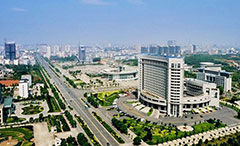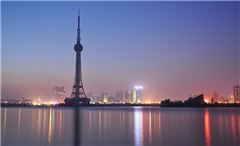Urban clusters to ease transport woes
2018-02-02
China Daily
The nation will accelerate the development of world-class urban clusters, in an effort to address issues such as overcrowded large cities and the unbalanced allocation of public resources among big and smaller cities, urban planning officials and experts said on Feb 1.
Chen Yajun, director of the National Development and Reform Commission’s development planning department, said that China will select qualified core cities to develop high-quality urban areas, and to further improve regional transport infrastructure and public services.
Some urban planners have suggested that the country should adopt the urban agglomeration approach to revolutionize the country’s urbanization process. The idea is to develop metropolitan areas according to the socioeconomic connections between core urban cities and their satellite cities, as well as neighboring rural areas.
The purpose is to fill the development gap between big and smaller cities, and to address the unbalanced allocation of public resources among different cities, Chen said at an urban planning forum in Beijing.
Pushing integrated and coordinated regional development has been one of the key tasks laid out by China’s top policymakers at the Central Economic Work Conference held in December.
President Xi Jinping has highlighted the integrated development of the Beijing-Tianjin-Hebei region, the Yangtze River Economic Belt, and the Guangdong-Hong Kong-Macao Greater Bay Area as three key regional development plans.
Zhou Muzhi, professor of economics at Tokyo Keizai University and head of Cloud River Urban Research Institute, said that the development of core cities will be a crucial driving force of China’s urbanization process.
“The country’s innovative capabilities, development of information technology and globalization trend will be the key factors driving China’s urbanization and regional development,” Zhou said.
Thirty Chinese cities saw population increases of more than 2.5 million people from 1980 to 2015, reflecting China’s explosive urbanization, according to the latest urban planning report by Cloud River Urban Research Institute.
The report developed a China Central City Index, which analyzed a total of 297 cities based on 10 indicators, including political status, economic and social power, transportation network, business environment, innovative capability, life quality, and culture and education levels.
Beijing, Shanghai and Guangzhou are the top three core cities in the index, based on the overall assessment. The top 37 cities in the index accounted for 40.7 percent of China’s GDP, nearly 60 percent of the country’s goods export, and 55.3 percent of total inbound tourists to the country.


